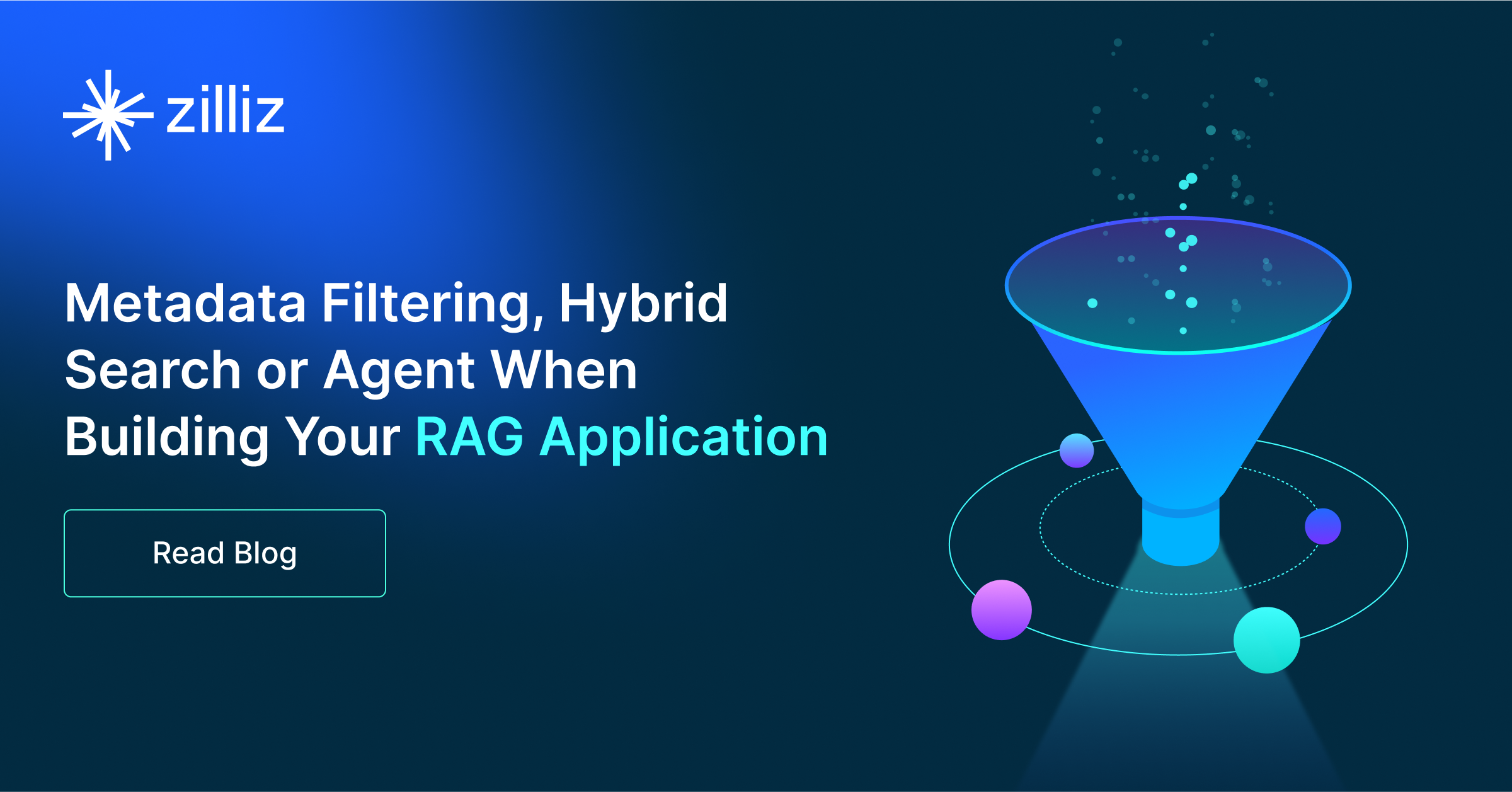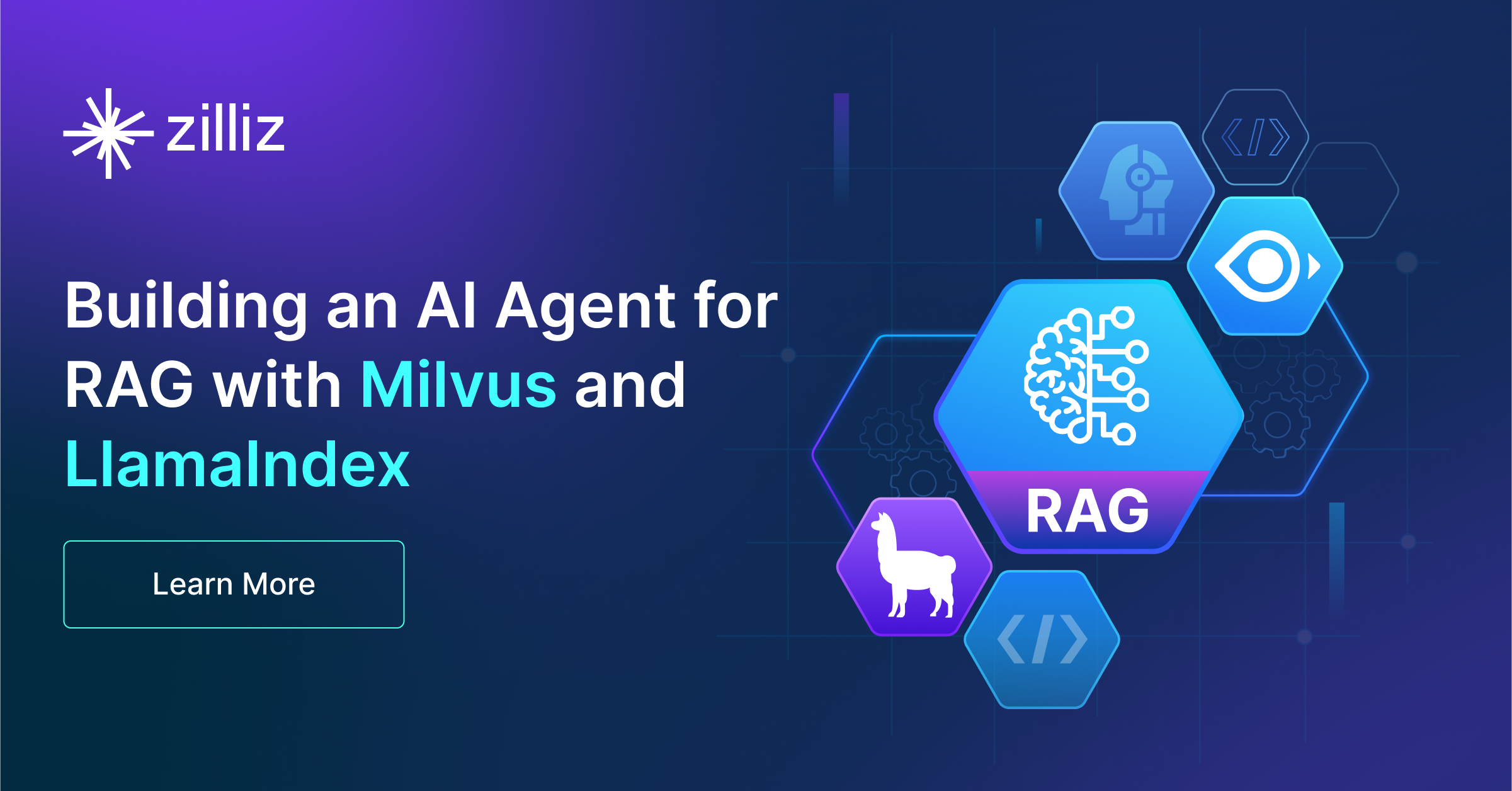Build RAG Chatbot with LangChain, OpenSearch, Mistral AI Mixtral 8x7B, and voyage-3-large
Introduction to RAG
Retrieval-Augmented Generation (RAG) is a game-changer for GenAI applications, especially in conversational AI. It combines the power of pre-trained large language models (LLMs) like OpenAI’s GPT with external knowledge sources stored in vector databases such as Milvus and Zilliz Cloud, allowing for more accurate, contextually relevant, and up-to-date response generation. A RAG pipeline usually consists of four basic components: a vector database, an embedding model, an LLM, and a framework.
Key Components We'll Use for This RAG Chatbot
This tutorial shows you how to build a simple RAG chatbot in Python using the following components:
- LangChain: An open-source framework that helps you orchestrate the interaction between LLMs, vector stores, embedding models, etc, making it easier to integrate a RAG pipeline.
- OpenSearch: An open-source search and analytics suite derived from Elasticsearch. It offers robust full-text search and real-time analytics, with vector search available as an add-on for similarity-based queries, extending its capabilities to handle high-dimensional data. Since it is just a vector search add-on rather than a purpose-built vector database, it lacks scalability and availability and many other advanced features required by enterprise-level applications. Therefore, if you prefer a much more scalable solution or hate to manage your own infrastructure, we recommend using Zilliz Cloud, which is a fully managed vector database service built on the open-source Milvus and offers a free tier supporting up to 1 million vectors.)
- Mistral AI's Mixtral 8x7B: A cutting-edge, multi-model architecture designed to enhance performance and efficiency. It combines 8 smaller models, each with 7 billion parameters, allowing for more specialized capabilities and improved scalability. This innovative design aims to deliver faster, more accurate AI responses while maintaining resource efficiency.
- Voyage-3-Large: This model is designed for generative tasks, offering enhanced creativity and contextual understanding. With robust training on diverse datasets, it excels in producing coherent narratives and dialogue, making it ideal for applications in storytelling, content creation, and interactive experiences where imaginative output is essential.
By the end of this tutorial, you’ll have a functional chatbot capable of answering questions based on a custom knowledge base.
Note: Since we may use proprietary models in our tutorials, make sure you have the required API key beforehand.
Step 1: Install and Set Up LangChain
%pip install --quiet --upgrade langchain-text-splitters langchain-community langgraph
Step 2: Install and Set Up Mistral AI Mixtral 8x7B
pip install -qU "langchain[mistralai]"
import getpass
import os
if not os.environ.get("MISTRAL_API_KEY"):
os.environ["MISTRAL_API_KEY"] = getpass.getpass("Enter API key for Mistral AI: ")
from langchain.chat_models import init_chat_model
llm = init_chat_model("open-mixtral-8x7b", model_provider="mistralai")
Step 3: Install and Set Up voyage-3-large
pip install -qU langchain-voyageai
import getpass
import os
if not os.environ.get("VOYAGE_API_KEY"):
os.environ["VOYAGE_API_KEY"] = getpass.getpass("Enter API key for Voyage AI: ")
from langchain-voyageai import VoyageAIEmbeddings
embeddings = VoyageAIEmbeddings(model="voyage-3-large")
Step 4: Install and Set Up OpenSearch
pip install --upgrade --quiet opensearch-py langchain-community
from langchain_community.vectorstores import OpenSearchVectorSearch
opensearch_vector_search = OpenSearchVectorSearch(
"http://localhost:9200",
"embeddings",
embedding_function
)
Step 5: Build a RAG Chatbot
Now that you’ve set up all components, let’s start to build a simple chatbot. We’ll use the Milvus introduction doc as a private knowledge base. You can replace it with your own dataset to customize your RAG chatbot.
import bs4
from langchain import hub
from langchain_community.document_loaders import WebBaseLoader
from langchain_core.documents import Document
from langchain_text_splitters import RecursiveCharacterTextSplitter
from langgraph.graph import START, StateGraph
from typing_extensions import List, TypedDict
# Load and chunk contents of the blog
loader = WebBaseLoader(
web_paths=("https://milvus.io/docs/overview.md",),
bs_kwargs=dict(
parse_only=bs4.SoupStrainer(
class_=("doc-style doc-post-content")
)
),
)
docs = loader.load()
text_splitter = RecursiveCharacterTextSplitter(chunk_size=1000, chunk_overlap=200)
all_splits = text_splitter.split_documents(docs)
# Index chunks
_ = vector_store.add_documents(documents=all_splits)
# Define prompt for question-answering
prompt = hub.pull("rlm/rag-prompt")
# Define state for application
class State(TypedDict):
question: str
context: List[Document]
answer: str
# Define application steps
def retrieve(state: State):
retrieved_docs = vector_store.similarity_search(state["question"])
return {"context": retrieved_docs}
def generate(state: State):
docs_content = "\n\n".join(doc.page_content for doc in state["context"])
messages = prompt.invoke({"question": state["question"], "context": docs_content})
response = llm.invoke(messages)
return {"answer": response.content}
# Compile application and test
graph_builder = StateGraph(State).add_sequence([retrieve, generate])
graph_builder.add_edge(START, "retrieve")
graph = graph_builder.compile()
Test the Chatbot
Yeah! You've built your own chatbot. Let's ask the chatbot a question.
response = graph.invoke({"question": "What data types does Milvus support?"})
print(response["answer"])
Example Output
Milvus supports various data types including sparse vectors, binary vectors, JSON, and arrays. Additionally, it handles common numerical and character types, making it versatile for different data modeling needs. This allows users to manage unstructured or multi-modal data efficiently.
Optimization Tips
As you build your RAG system, optimization is key to ensuring peak performance and efficiency. While setting up the components is an essential first step, fine-tuning each one will help you create a solution that works even better and scales seamlessly. In this section, we’ll share some practical tips for optimizing all these components, giving you the edge to build smarter, faster, and more responsive RAG applications.
LangChain optimization tips
To optimize LangChain, focus on minimizing redundant operations in your workflow by structuring your chains and agents efficiently. Use caching to avoid repeated computations, speeding up your system, and experiment with modular design to ensure that components like models or databases can be easily swapped out. This will provide both flexibility and efficiency, allowing you to quickly scale your system without unnecessary delays or complications.
OpenSearch optimization tips
To optimize OpenSearch in a Retrieval-Augmented Generation (RAG) setup, fine-tune indexing by enabling efficient mappings and reducing unnecessary stored fields. Use HNSW for vector search to speed up similarity queries while balancing recall and latency with appropriate ef_search and ef_construction values. Leverage shard and replica settings to distribute load effectively, and enable caching for frequent queries. Optimize text-based retrieval with BM25 tuning and custom analyzers for better relevance. Regularly monitor cluster health, index size, and query performance using OpenSearch Dashboards and adjust configurations accordingly.
Mistral AI Mixtral 8x7B optimization tips
Mixtral 8x7B is a mixture-of-experts (MoE) model, meaning only a subset of its parameters are used per query, optimizing efficiency while maintaining high performance. To maximize retrieval-augmented generation (RAG) efficiency, ensure retrieval pipelines return highly relevant context to avoid unnecessary token usage. Use adaptive chunking to provide structured and concise information, preventing retrieval of excessive or redundant data. Optimize inference speed by adjusting routing strategies, ensuring the right expert pathways are utilized efficiently. Fine-tune temperature (0.1–0.3 for factual tasks) and top-p settings to maintain response consistency. If running Mixtral in a self-hosted or API-based environment, leverage batching and parallel processing to handle high-throughput requests efficiently. When combining Mixtral with other models in a multi-tier system, use it selectively for reasoning-heavy queries while delegating simpler tasks to smaller models.
voyage-3-large optimization tips
voyage-3-large provides enhanced reasoning capabilities, making it ideal for complex RAG tasks requiring deep contextual understanding. Optimize retrieval by implementing a multi-step ranking system that prioritizes highly relevant documents while filtering out lower-quality information. Use structured prompts with clearly delineated context and user queries to improve comprehension. Adjust temperature (0.1–0.3) and fine-tune top-k and top-p settings to maintain accuracy and prevent excessive variability. Take advantage of parallelized inference and request batching to improve processing efficiency. Leverage caching for high-frequency queries to reduce costs and latency. In multi-model setups, deploy voyage-3-large for intricate reasoning tasks while using smaller models for less complex queries to balance cost and performance effectively.
By implementing these tips across your components, you'll be able to enhance the performance and functionality of your RAG system, ensuring it’s optimized for both speed and accuracy. Keep testing, iterating, and refining your setup to stay ahead in the ever-evolving world of AI development.
RAG Cost Calculator: A Free Tool to Calculate Your Cost in Seconds
Estimating the cost of a Retrieval-Augmented Generation (RAG) pipeline involves analyzing expenses across vector storage, compute resources, and API usage. Key cost drivers include vector database queries, embedding generation, and LLM inference.
RAG Cost Calculator is a free tool that quickly estimates the cost of building a RAG pipeline, including chunking, embedding, vector storage/search, and LLM generation. It also helps you identify cost-saving opportunities and achieve up to 10x cost reduction on vector databases with the serverless option.
 Calculate your RAG cost
Calculate your RAG cost
What Have You Learned?
By diving into this tutorial, you’ve unlocked the magic of building a RAG system from the ground up using cutting-edge tools! You learned how LangChain acts as the backbone, seamlessly orchestrating the flow between components while handling complex tasks like document splitting and prompt management. OpenSearch, your powerful vector database, steps in to store and retrieve contextual data with blazing speed, ensuring your system can sift through mountains of information in real time. Then there’s Mistral AI’s Mixtral 8x7B—the LLM powerhouse that transforms retrieved context into human-like answers, blending creativity with precision. And let’s not forget voyage-3-large, the embedding model that converts text into rich numerical representations, making semantic search smarter than ever. Together, these tools form a dynamic pipeline where each piece plays a critical role: fetching, understanding, and generating responses that feel almost telepathic!
But the learning doesn’t stop there! You also discovered pro tips for optimizing performance, like tuning chunk sizes for embeddings or balancing speed and accuracy in retrieval. Plus, the free RAG cost calculator shared in the tutorial helps you budget wisely, so you can experiment without breaking the bank. Now that you’ve seen how these pieces fit together, imagine the possibilities—building AI assistants that answer questions with depth, creating research tools that feel like magic, or crafting customer support bots that actually understand context. The foundation is yours to build on. So grab your code editor, tweak those parameters, and start innovating. Your RAG-powered future is just a few lines of code away—go make it happen! 🚀
Further Resources
🌟 In addition to this RAG tutorial, unleash your full potential with these incredible resources to level up your RAG skills.
- How to Build a Multimodal RAG | Documentation
- How to Enhance the Performance of Your RAG Pipeline
- Graph RAG with Milvus | Documentation
- How to Evaluate RAG Applications - Zilliz Learn
- Generative AI Resource Hub | Zilliz
We'd Love to Hear What You Think!
We’d love to hear your thoughts! 🌟 Leave your questions or comments below or join our vibrant Milvus Discord community to share your experiences, ask questions, or connect with thousands of AI enthusiasts. Your journey matters to us!
If you like this tutorial, show your support by giving our Milvus GitHub repo a star ⭐—it means the world to us and inspires us to keep creating! 💖
- Introduction to RAG
- Key Components We'll Use for This RAG Chatbot
- Step 1: Install and Set Up LangChain
- Step 2: Install and Set Up Mistral AI Mixtral 8x7B
- Step 3: Install and Set Up voyage-3-large
- Step 4: Install and Set Up OpenSearch
- Step 5: Build a RAG Chatbot
- Optimization Tips
- RAG Cost Calculator: A Free Tool to Calculate Your Cost in Seconds
- What Have You Learned?
- Further Resources
- We'd Love to Hear What You Think!
Content
Vector Database at Scale
Zilliz Cloud is a fully-managed vector database built for scale, perfect for your RAG apps.
Try Zilliz Cloud for Free


